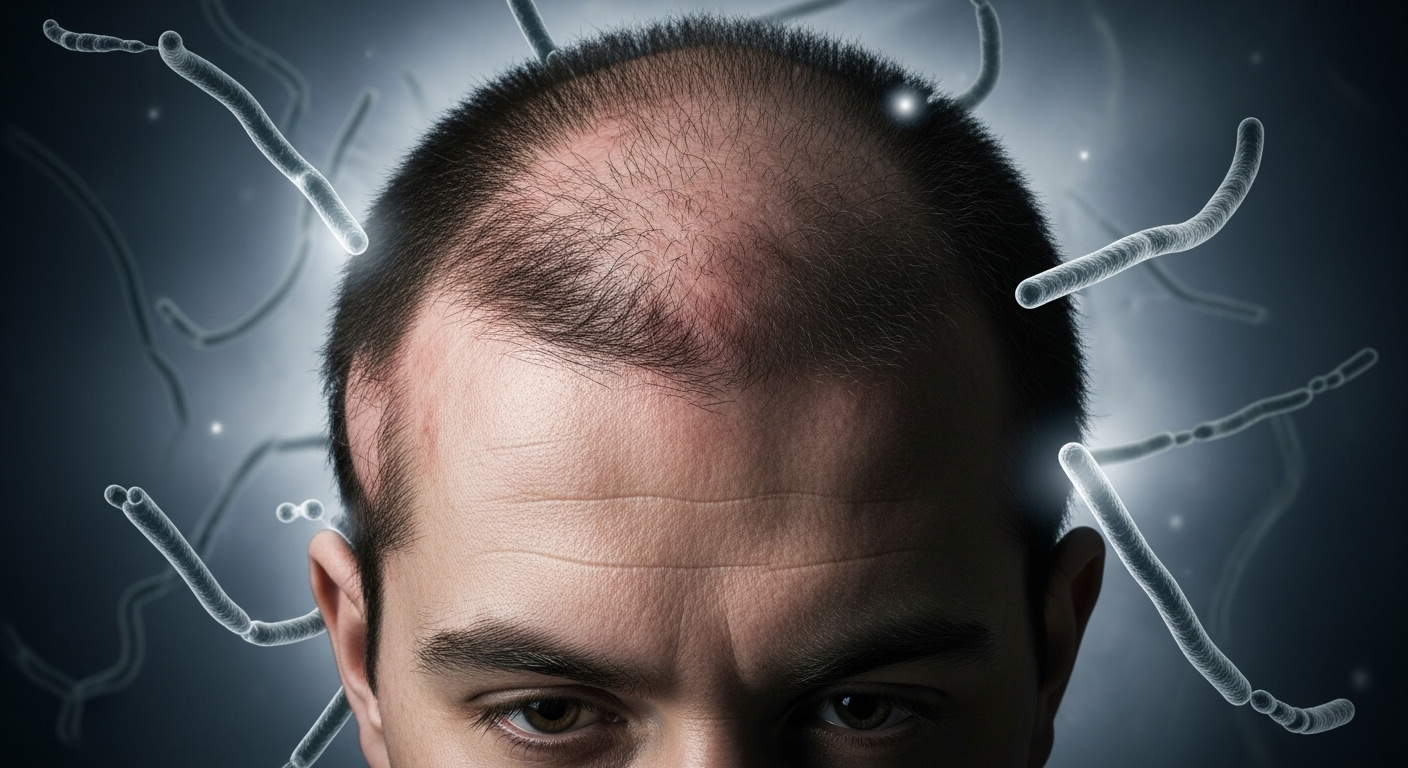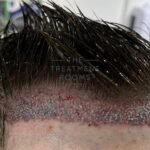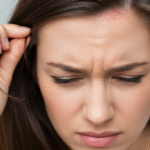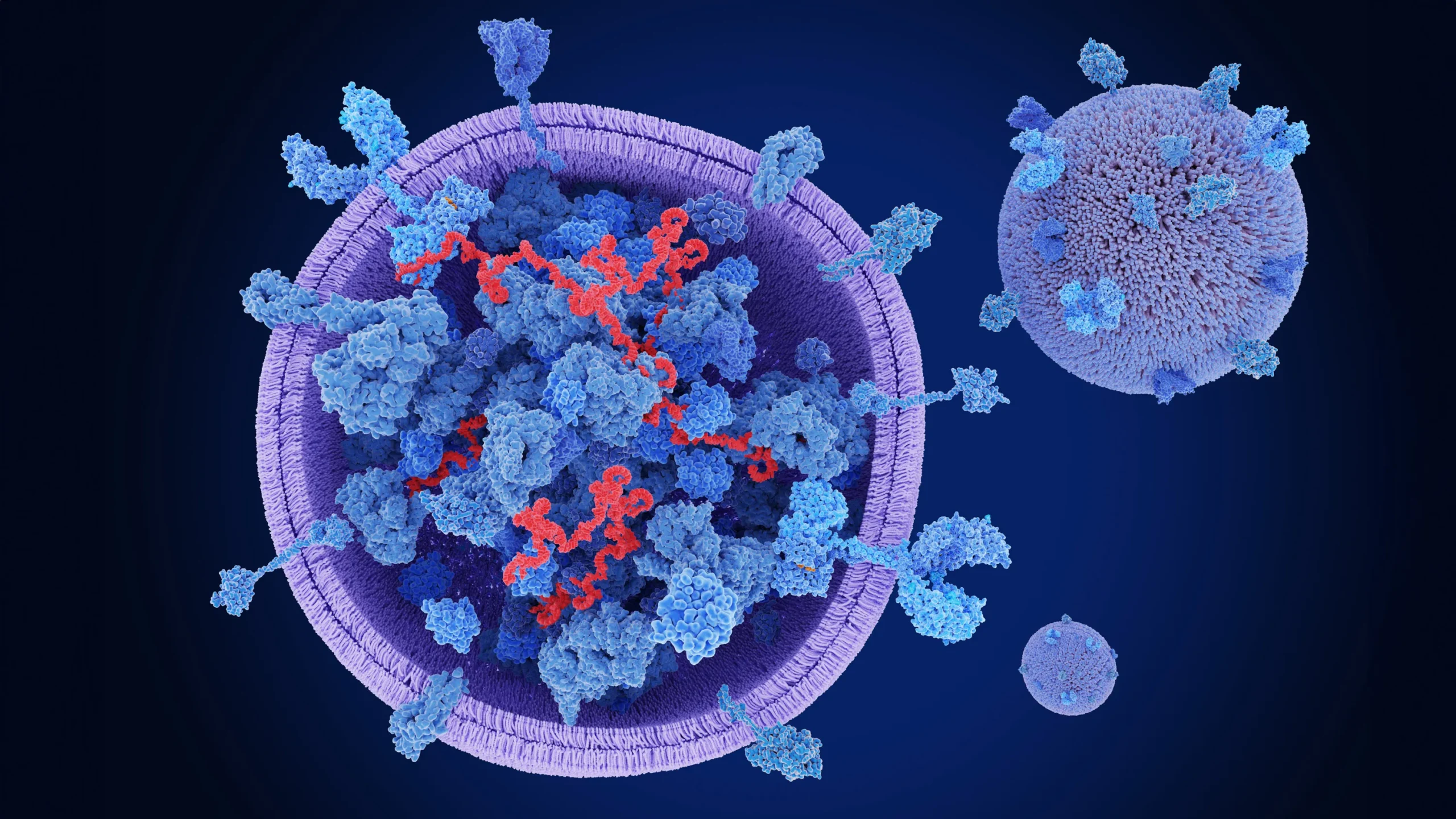Noticing unexpected bald patches or thinning hair can be alarming, especially if you’re wondering, can syphilis cause hair loss? In many cases, this symptom may be linked to syphilitic alopecia—a reversible type of hair loss caused by secondary syphilis that often imitates other scalp conditions. In this article, you’ll learn exactly how it develops, the …
Noticing unexpected bald patches or thinning hair can be alarming, especially if you’re wondering, can syphilis cause hair loss? In many cases, this symptom may be linked to syphilitic alopecia—a reversible type of hair loss caused by secondary syphilis that often imitates other scalp conditions.
In this article, you’ll learn exactly how it develops, the patterns it can take, how doctors diagnose it, and the treatments that can help. With expert insights and recovery advice, you’ll be equipped to act early, safeguard your health, and regain both your hair and your confidence.
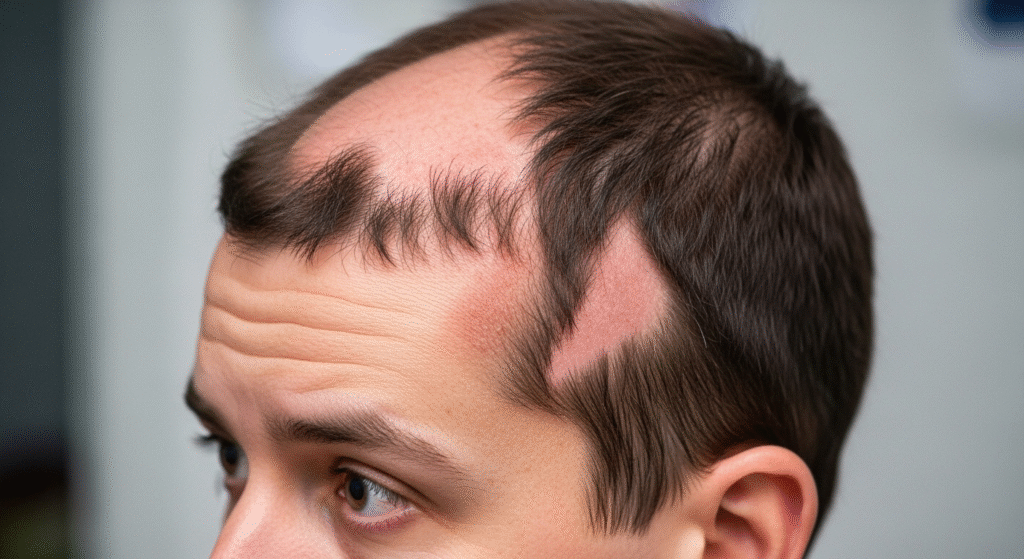
What Is Syphilitic Alopecia (Hair Loss from Syphilis)?
Syphilitic alopecia (also called alopecia syphilitica) is a non-scarring form of hair loss that appears during secondary syphilis—the stage when the bacterial infection Treponema pallidum spreads throughout the body. Unlike genetic hair loss, this condition is directly linked to infection and inflammation affecting hair follicles.
Key points:
- Appears in patchy or diffuse forms.
- Usually accompanied by other secondary syphilis signs such as skin rash, swollen lymph nodes, or fever.
- Reversible with timely antibiotic treatment.
How Syphilis Causes Hair Loss – The Mechanism
Hair loss from syphilis is not random—it’s caused by the body’s immune response to the infection.
- Bacterial Invasion: Treponema pallidum reaches the skin and hair follicles.
- Inflammatory Reaction: The immune system attacks the infected follicles, causing inflammation and disrupting hair growth.
- Follicular Damage: Lymphocytes (white blood cells) infiltrate the follicles, leading to temporary shedding.
- Non-Scarring Outcome: Unlike permanent alopecia, the follicles remain intact, allowing regrowth after treatment.
Patterns of Syphilitic Hair Loss & Prevalence
Syphilitic alopecia can present in different forms, which can make diagnosis tricky:
- Moth-Eaten Pattern – Small, irregular bald patches scattered across the scalp.
- Diffuse Pattern – Even thinning across the whole scalp without distinct patches.
- Mixed Pattern – Combination of patchy and diffuse hair loss.
Prevalence:
- Studies show 2.9–22% of secondary syphilis patients experience some form of alopecia.
- Higher prevalence in untreated cases or delayed diagnosis.
Diagnosing Syphilitic Alopecia
Diagnosis requires careful clinical evaluation because symptoms can mimic alopecia areata, tinea capitis, or telogen effluvium.
Diagnostic Steps:
- Clinical Examination: Look for characteristic hair loss patterns and other syphilis signs (e.g., rash on palms/soles).
- Trichoscopy: Dermatoscope reveals empty follicles, regrowing hairs, and broken hair shafts.
- Serologic Tests:
- Nontreponemal: VDRL, RPR
- Treponemal: TPHA, FTA-ABS
- Differential Diagnosis: Rule out fungal infections, autoimmune alopecia, or hormonal causes.
Treatment and Hair Regrowth Timeline
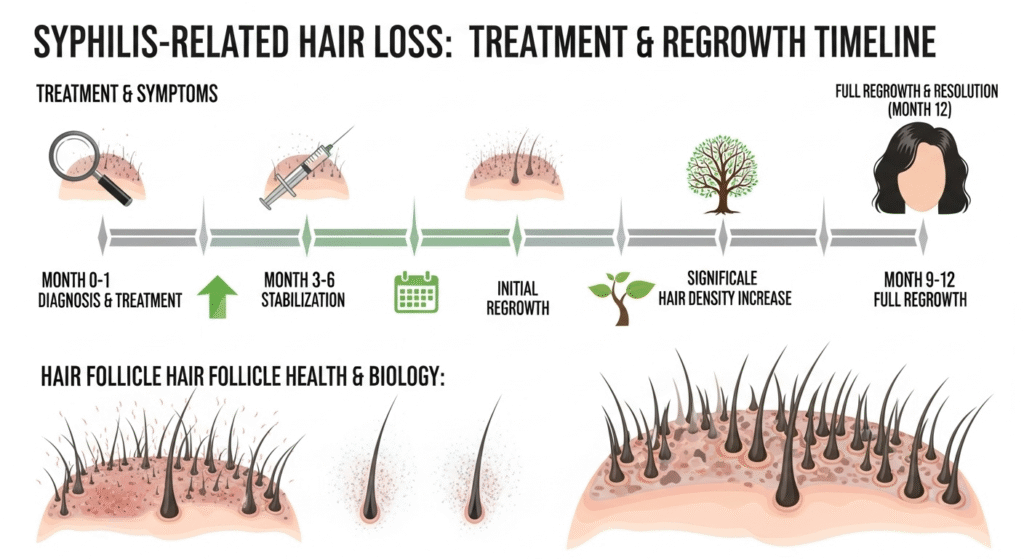
Treating syphilitic alopecia focuses on eradicating the infection and allowing the hair to naturally regrow.
First-Line Treatment:
- Benzathine Penicillin G (single intramuscular dose for early syphilis).
- Doxycycline (for penicillin-allergic patients).
Supportive Care:
- Gentle hair care (avoid chemical treatments and heat styling).
- Balanced nutrition for hair health.
Hair Regrowth Timeline:
- Initial shedding may continue for 1–2 weeks after treatment starts.
- Noticeable regrowth typically within 6–12 weeks.
- Full recovery often achieved in 3–6 months.
Can Syphilis Cause Hair Loss: Why This Article Is Helpful
This article combines medical accuracy with actionable advice, covering:
- How to recognize early signs.
- When to seek me dical help.
- What treatment and recovery look like.
You’ll leave with both knowledge and a clear action plan, ensuring your hair loss is addressed promptly and effectively.
FAQ
1. Is hair loss from syphilis permanent?
No. Syphilitic alopecia is non-scarring, meaning hair follicles remain intact. Hair regrows after proper treatment.
2. How long does hair loss last after treatment?
Most people see improvement within 2–3 months, with full regrowth in about 6 months.
3. Can syphilitic alopecia occur without other symptoms?
Yes, in rare cases, hair loss can be the only visible sign of secondary syphilis.
4. Does it affect only the scalp?
No. It can also affect eyebrows, beard, and other body hair.
5. When should I see a doctor?
If you notice unexplained patchy or diffuse hair loss, especially with rash or swollen lymph nodes, see a dermatologist or STI specialist immediately.
Ready To Take Your Next Step
If you suspect your hair loss may be linked to syphilis, don’t delay seeking help—early diagnosis prevents complications and speeds recovery.
Book a confidential consultation with Dr. Uzma Irfan, an ISHRS-certified surgeon in Islamabad today to get tested, start treatment, and begin your journey back to healthy hair.

